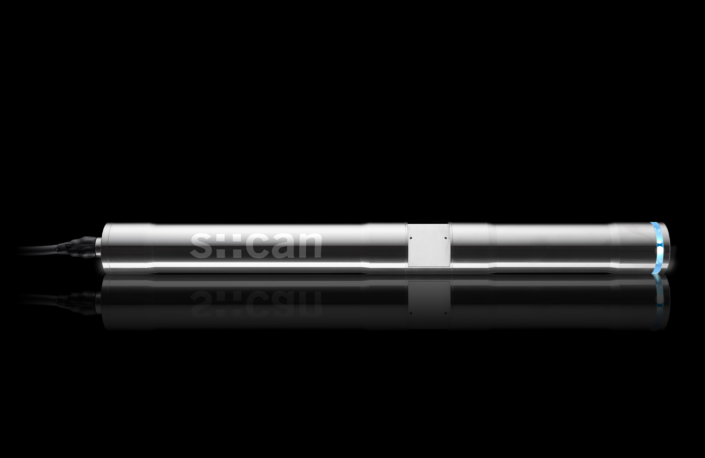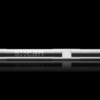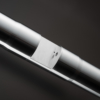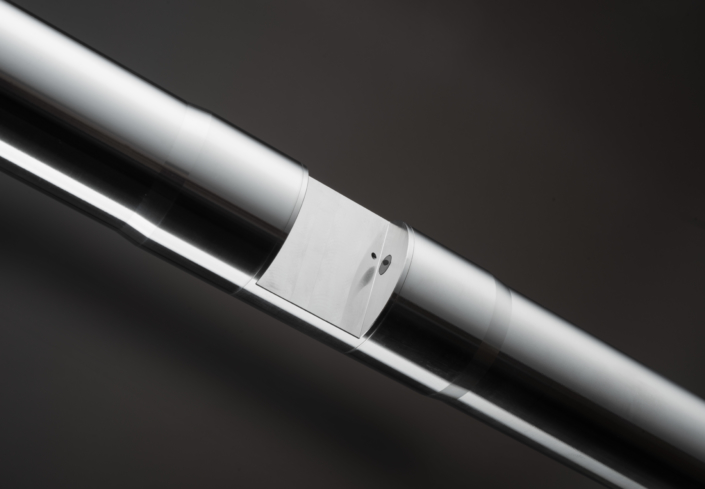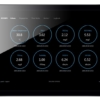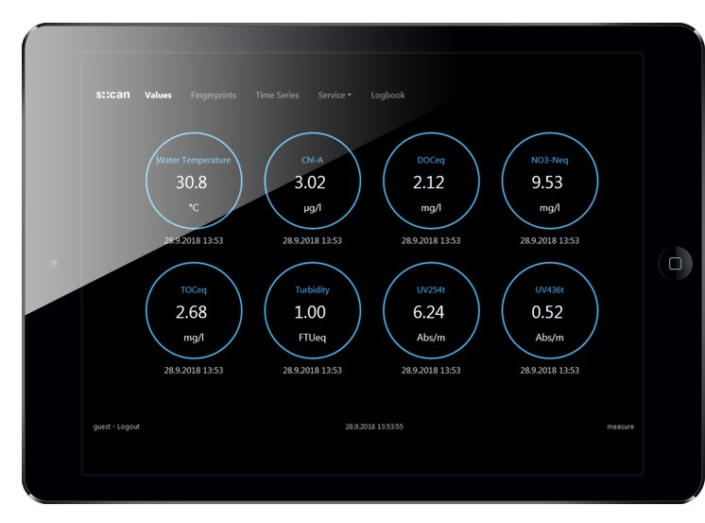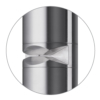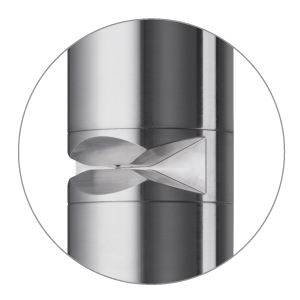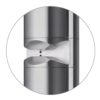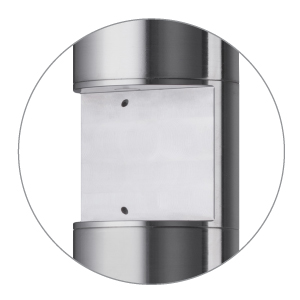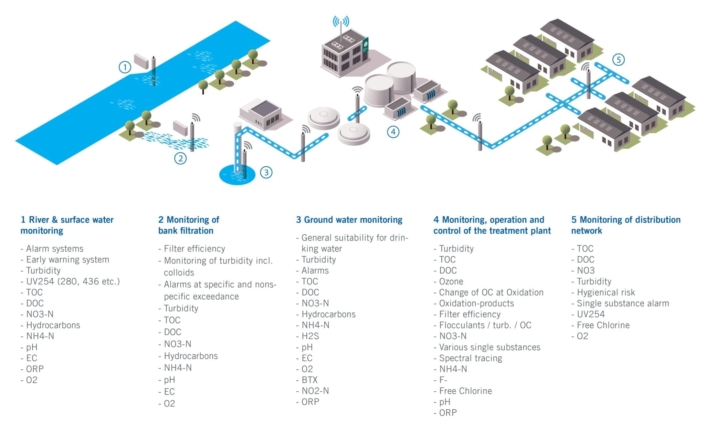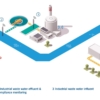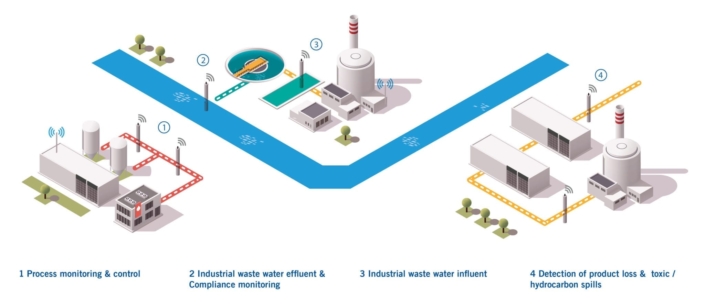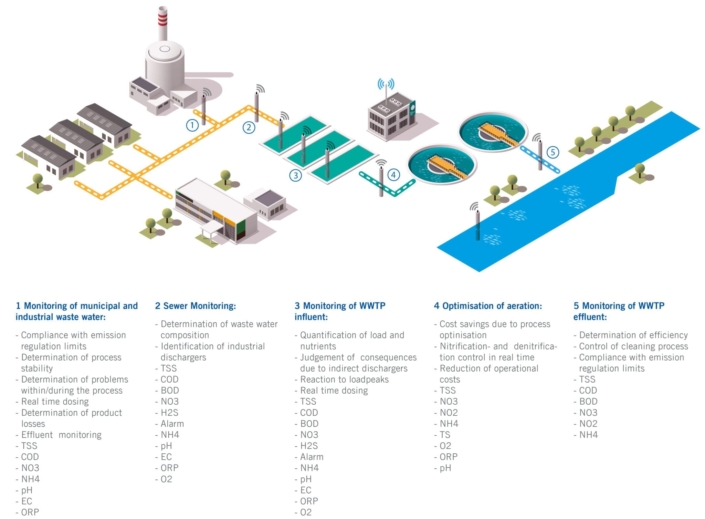Related Documentation
spectro::lyser V3
The spectro::lyser V3 is an IoT enabled, fully submersible spectrometer instrument that uses the power of light to measure multiple water quality parameters simultaneously.
Overview
The spectro::lyser V3 is suited for a wide variety of monitoring applications ranging from ultra-pure water to the harsh wastewater. It analyzes spectral data across the range of 190-750nm to determine the various user selected water quality parameters.
-
- No controller required – can be connected directly to DCS/SCADA
- Onboard webserver (io::tool) can be connected to with any web browser over bluetooth, WLAN, and ethernet
- Huge 8GB onboard memory for many years of standalone logging
- Extremely fast 10 second measurement interval – ideal for process control and event detection
- 1mm, 5mm, 35mm pathlengths available for various applications
- Power efficient (60mW power draw in sleep mode)
- Long-term stability due to automatic cleaning and optical test method
- Minimal maintenance required, easy troubleshooting with optical information ring
- Factory pre-calibrated, local multipoint calibration possible
- Can be mounted either directly in-stream (in-situ) or in a flow-cell/bypass
- Contaminant alarms based on the spectral fingerprint detect unidentified pollutants
- By including additional sensors into the system, further parameters can be derived, such as chlorine demand for treatment of water (with the inclusion of the chlori::lyser) or H2S (with the inclusion of the pH::lyser sensor)
- Gives full UV-Vis spectral fingerprint of the monitored water
- Turbidity compensated spectra, ensuring high accuracy and reliability in its results
- Software can trigger an alarm if unusual changes in the water are measured
- Software can re-evaluate collected spectra if a bad calibration was used. Allows historical data to be re-examined for new contaminants based on future calibrations
Tested Parameters
Applications

